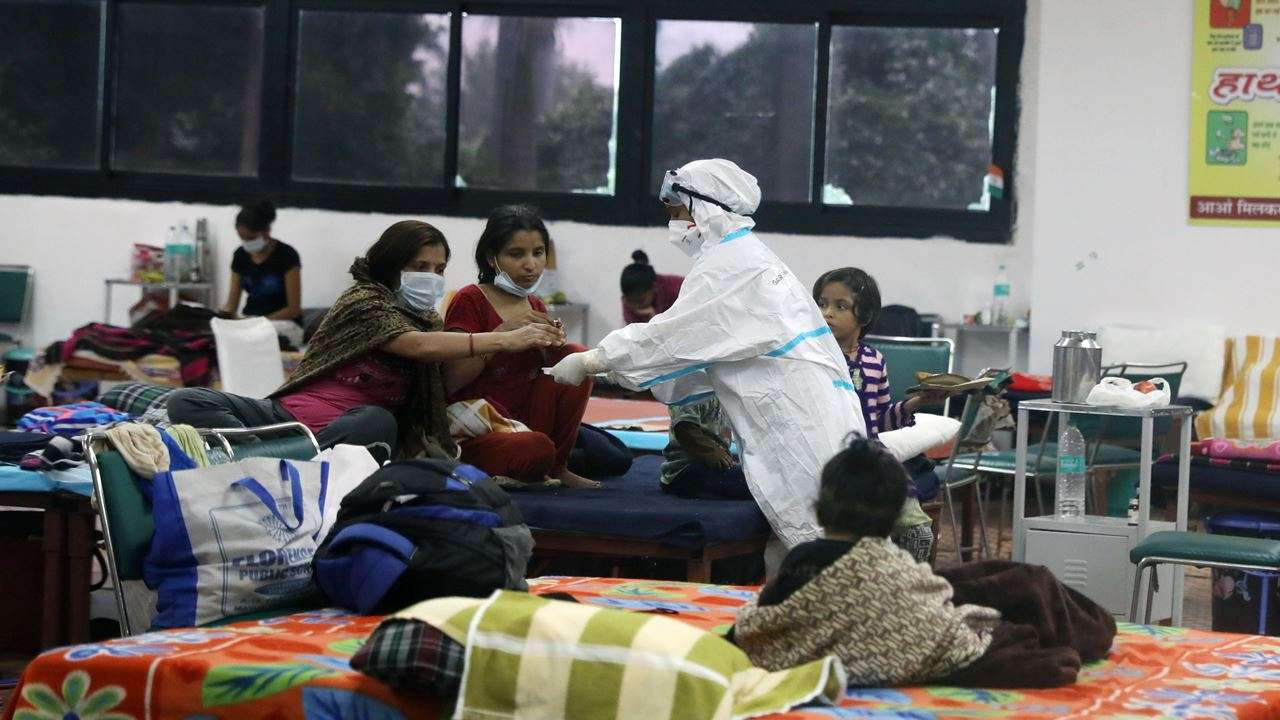
The findings of the first national population-based serosurvey conducted by the ICMR have been released. The findings indicated that 0.73% of adults in India were exposed to SARS-CoV-2 infection, amounting to 6.4 million infections in total by early May 2020, revealed the Indian Council of Medical Research (ICMR) serosurvey.
The survey results showed that the seropositivity rate was highest in rural areas (villages) at 69.4%, while it was recorded at 15.9% in urban slums and 14.6% in urban non-slums.
Seropositivity was highest in the age group of 18–45 years (43.3), followed by those aged 46–60 years (39.5) and lowest seropositivity among those above 60.
Males living in urban slums and occupations with a high risk of exposure to potentially infected persons were associated with seropositivity, it said.
The survey was conducted from May 11 to June 4 and covered 28,000 individuals whose blood samples were tested for IgG antibodies using COVID Kavach ELISA kit.
The findings were published in the latest issue of the Indian Journal of Medical Research which noted that the serosurvey was a randomly sampled, community-based survey performed in 700 villages/wards, selected from the 70 districts of the 21 states.
Those states were then categorised into four strata based on the incidence of reported COVID-19 cases, i.e., zero cases 15 districts; low cases 22 districts; medium cases 16 districts; and high cases 17 districts.
The seroprevalence ranged between 0.62 and 1.03% across the four strata of districts.
A total of 30,283 households were visited and a total of 28,000 individuals consented to participate. Nearly half (48.5%) of the survey participants were aged between 18 and 45 years and 51.5% (14,390) were female.
The findings indicated that 0.73% of adults in India were exposed to SARS-CoV-2 infection, amounting to 6.4 million infections in total by the early May 2020, revealed the Indian Council of Medical Research (ICMR) serosurvey.
Based on the overall adjusted seroprevalence of 0.73% and the reported number of COVID-19 cases, it was estimated that for every RT-PCR confirmed case of COVID-19, there were 82-130 infections in India, noted the survey.
Of the 28,000 individuals initially tested by COVID Kavach ELISA, 256 were classified as positive and 69 as indeterminate.
The level of seropositivity to SARS-CoV-2 detected in the stratum of districts with zero cases could be due to the under-detection of COVID-19 cases in the zero stratum districts on account of low testing as well as poor access to the testing laboratories.
The present findings of seropositivity in the strata of districts with zero to the low incidence of COVID-19 cases underscore the need to strengthen surveillance and augment the testing of suspected cases in these areas.
The result of a serosurvey in Andhra Pradesh has shown that 19.7% of people have developed antibodies to COVID-19. It also revealed that a high percentage of people who had contracted the coronavirus were asymptomatic, said the State government.
"Little less than 20% of the population in nine districts have developed antibodies and they are immune. The rise of infection is low but there is a chance that cases will continue to come for some time," said Katamneni Bhaskar, Andhra Pradesh Health Commissioner.
In conclusion, the findings of the serosurvey indicated that the overall seroprevalence in India was low with less than 1% of the adult population exposed to SARS-CoV-2 infection in India in mid-May 2020.
As most of the population remains susceptible to infection, our public health strategy needs to plan for an inevitable increase in transmission.
It is further recommended to establish the district-level facility-based sentinel sero-surveillance to systematically monitor the trend of infection in the long term to inform local decision-making at the lowest administrative unit of public health response towards the COVID-19 epidemic in the country.